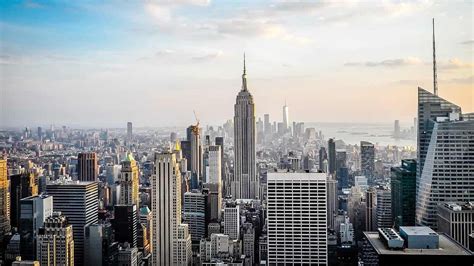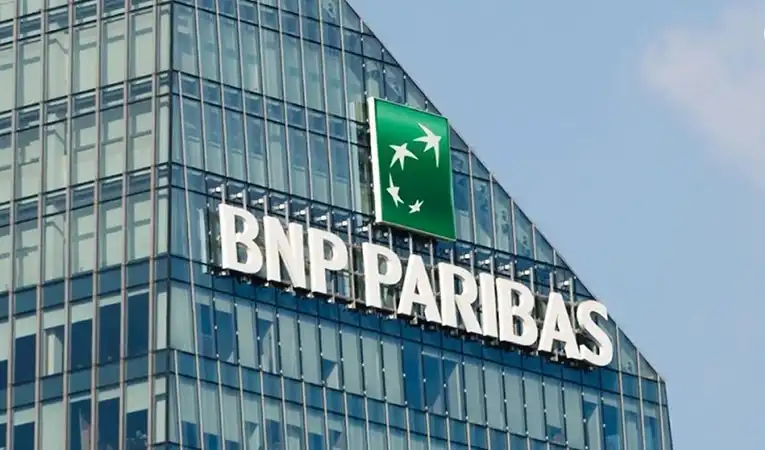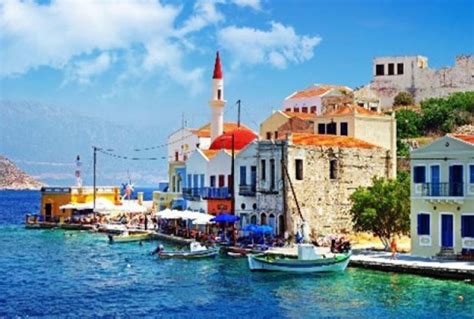Welcome to our blog where we’ll guide you through an unforgettable festival experience. Whether you’re a seasoned festival-goer or a first-timer, we’ve got you covered. In this post, we’ll provide you with essential tips and tricks to make the most out of your festival adventure. From researching the festival’s schedule and planning your itinerary in advance to navigating the crowds and exploring the different food zones, we’ve got all the insider information you need to ensure a fantastic time. Get ready to sample unique culinary delights and immerse yourself in the vibrant atmosphere of this incredible event. Let’s dive in!
Researching the Festival’s Schedule
When attending a festival, it is essential to research and plan ahead to make the most of your experience. Knowing the festival’s schedule beforehand can help you prioritize your activities and ensure that you don’t miss any of the highlights. By familiarizing yourself with the festival’s schedule, you can plan your day accordingly and allocate enough time for each event or performance that you want to attend.
One effective way to research the festival’s schedule is to visit its official website. Most festivals have a dedicated page or section on their website where they provide detailed information about the schedule, including dates, times, and locations of various events. The official website is a reliable source of information and usually gets updated regularly, so you can stay informed about any changes or additions to the schedule.
Another way to gather information about the festival’s schedule is through social media platforms. Many festivals have active social media accounts where they regularly post updates, including schedule announcements and changes. Following the festival’s official accounts on platforms like Facebook, Instagram, or Twitter can help you stay up to date with the latest information. Additionally, these platforms often allow users to interact with the festival organizers and ask any specific questions they might have.
Once you have collected all the necessary information about the festival’s schedule, it can be helpful to make a personalized itinerary. List out the events and performances you don’t want to miss and allocate time for each of them. Having a well-planned itinerary can ensure that you make the most of your time at the festival and minimize any conflicts or overlaps between different activities.
In addition to researching the festival’s main events, it can be beneficial to explore any workshops, talks, or demonstrations that are taking place. These smaller activities may offer unique experiences and insights into the festival’s theme or culture. By going beyond the main schedule and exploring these additional offerings, you can delve deeper into the festival experience and discover hidden gems.
In conclusion, researching the festival’s schedule is vital for anyone attending a festival. By utilizing official websites, social media platforms, and making a personalized itinerary, you can ensure that you don’t miss out on any highlights and make the most of your time at the festival. So, grab your calendar, start researching, and get ready for an unforgettable festival experience!
Planning Your Itinerary in Advance
Planning your itinerary in advance is crucial to ensure a smooth and well-organized trip. Whether you are embarking on a solo adventure or traveling with a group, careful planning can make all the difference in maximizing your time and experiencing everything your destination has to offer. By creating a detailed itinerary, you can prioritize your activities, make the most of your limited time, and avoid any potential hiccups along the way.
When it comes to planning your itinerary, consider the following steps to make the process more manageable and enjoyable:
- Research: Before you start making any arrangements, take the time to research your destination thoroughly. Look for attractions, landmarks, events, and activities that you don’t want to miss. Familiarize yourself with the city or region’s transportation system, as well as any cultural customs or local traditions that may affect your visit. This initial research will provide you with a solid foundation to build your itinerary.
- Create a Wish List: Once you have a general idea of what your destination has to offer, make a wish list of all the things you want to see and do during your trip. Don’t worry about narrowing it down just yet; this step is all about brainstorming and getting excited about the possibilities.
- Prioritize: After creating your wish list, it’s time to prioritize. Consider the duration of your trip and the feasibility of each activity. Rank your options based on your interests and allocate realistic timeframes for each. Remember, it’s better to fully enjoy a few attractions rather than rushing through multiple ones.
| Day | Activities |
|---|---|
| Day 1 | Visit famous historical landmarks |
| Day 2 | Explore local markets and try traditional cuisine |
| Day 3 | Take a guided tour to nearby natural attractions |
By creating a day-by-day schedule, you can effectively manage your time and avoid missing out on any must-see attractions. Be sure to include some free time for unexpected adventures or relaxation. Remember, flexibility is key to a successful itinerary. Allow room for adjustments and spontaneity, as some of the best travel experiences are the unplanned ones.
Lastly, keep in mind that while it’s essential to plan and have a packed itinerary, it’s equally important to allow yourself some downtime. Don’t overcommit or exhaust yourself trying to fit every possible activity into your schedule. Remember to savor the moment, enjoy the journey, and create lasting memories.
Navigating the Crowds: Best Times to Visit
When it comes to attending festivals or large events, timing can be everything. Navigating through the crowds can be a daunting task, especially if you’re not a fan of large crowds. That’s why choosing the best times to visit is crucial for a smooth and enjoyable experience. In this blog post, we’ll discuss some tips and tricks on how to navigate the crowds and make the most out of your festival experience.
One of the key factors in avoiding large crowds is to plan your visit during weekdays. Weekends are typically the busiest days at festivals, as more people have time off from work and are looking for weekend entertainment. By choosing to visit on a weekday, you can significantly reduce the number of people around you, allowing for a more relaxed and comfortable experience.
In addition to weekdays, another great time to visit is during the early morning or late evening hours. Many festivals have extended operating hours, and arriving early or staying late can give you a chance to experience the event with smaller crowds. This is especially true for festivals with nighttime entertainment or fireworks displays, as the majority of visitors tend to head home earlier.
- Visit on weekdays for smaller crowds
- Consider early morning or late evening hours
- Take advantage of extended operating hours
Another strategy to navigate the crowds is to plan your visit according to the festival’s schedule. Researching the event’s lineup and schedule can help you identify which activities or performances are likely to attract the largest crowds. By avoiding these peak times, you can explore the festival grounds with ease and spend more time on the activities that interest you the most.
| Time Slot | Activities |
|---|---|
| Morning | Street performances |
| Afternoon | Musical performances |
| Evening | Fireworks display |
As shown in the table above, during the morning, street performances are likely to draw large crowds. If you prefer a more relaxed atmosphere, consider exploring other areas of the festival or attending activities that are less crowded during that time. By having a plan and knowing what to expect, you can make informed decisions and have a more enjoyable festival experience.
In conclusion, navigating through the crowds and choosing the best times to visit a festival is essential for a pleasant and stress-free experience. By visiting on weekdays, taking advantage of early morning or late evening hours, and planning your visit according to the festival’s schedule, you can minimize the impact of crowds and have a more enjoyable time exploring all the festival has to offer.
Exploring the Different Food Zones
When attending a festival, one of the highlights is undoubtedly the diverse range of food options available. Whether you’re a foodie looking to sample unique culinary delights or simply enjoy exploring different cuisines, the festival’s food zones have something to offer for everyone. These zones are strategically designed to cater to various tastes and preferences, ensuring that attendees have a memorable gastronomic experience. Let’s take a closer look at the different food zones and what they have in store for festival-goers.
Firstly, it’s essential to note that each food zone at the festival showcases a specific type of cuisine or culinary theme. This creates a sense of variety and allows attendees to choose precisely what they’re in the mood for. From tantalizing street food to international delicacies, the options seem endless. Whether you fancy indulging in savory Mexican dishes, trying out authentic Asian street food, or savoring delicious Mediterranean flavors, you’ll find it all in the diverse food zones.
Furthermore, these food zones are more than just places to eat. They often provide a unique and immersive experience, transporting visitors to different culinary worlds. For instance, some food zones might have elaborate decorations that reflect the cuisine’s cultural heritage, allowing you to immerse yourself in the ambiance while enjoying your meal. Additionally, live cooking demonstrations and interactive workshops are frequently organized to provide insight into various cooking techniques and traditions.
- In the first food zone, you’ll have the opportunity to explore the flavors of the world. From traditional dishes to innovative fusion creations, this zone is a melting pot of culinary wonders.
- The second food zone focuses on local and regional cuisine. Here, you can taste the authentic flavors of the festival’s host location while supporting local food vendors and businesses.
- For those seeking a unique and alternative dining experience, the third food zone offers a variety of street food options. From food trucks to pop-up stalls, you’ll find a wide range of delicious and affordable options to satisfy your hunger.
- If you’re a fan of sweets and desserts, the fourth food zone is a must-visit. Indulge in delectable pastries, cakes, and other sweet treats from local pastry shops and talented dessert artists.
| Food Zone | Cuisine/Theme | Highlights |
|---|---|---|
| World Flavors | Various international cuisines and fusion dishes | Wide range of options, innovative flavors |
| Local and Regional | Cuisine specific to the festival’s host location | Authentic flavors, support for local businesses |
| Street Food | Assortment of street food options | Diverse and affordable, unique dining experience |
| Sweets and Desserts | Delightful pastries, cakes, and desserts | Indulgent treats, talented dessert artists |
Exploring the different food zones at the festival not only allows you to satiate your taste buds but also brings you closer to the cultural richness and culinary diversity of the event. It’s a chance to embark on a culinary journey around the world, tasting flavors that you may not encounter in your everyday life. So, next time you attend a festival, make sure to allocate ample time to explore the various food zones and savor the unique culinary delights they have to offer.
Sampling Unique Culinary Delights
When it comes to experiencing a festival, one of the highlights for many people is the food. From mouth-watering street food to tantalizing desserts, festivals offer a wide array of unique culinary delights that will leave your taste buds begging for more. Whether you’re a foodie looking to try something new or simply enjoy indulging in delicious treats, exploring the diverse food options at a festival is a must-do activity.
One of the best ways to fully immerse yourself in the culinary offerings of a festival is to research the different food zones available. Festivals often have designated areas where vendors set up for attendees to explore. These food zones are typically divided based on themes such as international cuisine, local specialties, or specific types of food such as seafood or barbecue. Researching the festival’s schedule and layout can help you plan your culinary adventure more efficiently.
Once you have an idea of the food zones available, it’s essential to plan your itinerary in advance. With so many delectable options to choose from, it can be overwhelming to decide what to try. By reviewing the festival’s schedule and identifying the specific vendors or food stands you want to visit, you can ensure you don’t miss out on any of your top picks. This will also help you navigate the crowds more efficiently, as you won’t need to spend extra time wandering around in search of the perfect dish.
As you make your way through the festival, don’t forget to sample the unique culinary delights each vendor has to offer. From traditional dishes that showcase the region’s cultural heritage to fusion creations that marry flavors from different cuisines, festivals provide a platform for culinary experimentation. Be adventurous and step out of your comfort zone by trying dishes you wouldn’t typically encounter in your everyday life. You never know, you might discover a new favorite food or flavor combination!
To make the most of your culinary experience, it’s also important to visit the festival during the best times to avoid long lines and crowded food stalls. Researching the festival’s peak hours and planning your visit during off-peak times can save you precious waiting time and allow you to savor your chosen dishes without feeling rushed. You’ll have more room to explore different food zones, engage with vendors, and take in the vibrant atmosphere of the festival.
In conclusion, sampling unique culinary delights is an integral part of any festival experience. From thoroughly researching the festival’s food zones to planning your itinerary in advance, being strategic in your approach can enhance your culinary adventure. Embrace the opportunity to try new dishes, flavors, and combinations that you may not encounter elsewhere. By visiting during off-peak times, you’ll be able to fully immerse yourself in the festival’s culinary offerings and indulge in a delightful gastronomic journey.
Keywords: unique culinary delights, festival, food zones, itinerary, sampling, flavors, vendors, research, off-peak times, gastronomic journey
Content Rich Only: Researching the Festival’s Schedule, Planning Your Itinerary in Advance, Navigating the Crowds: Best Times to Visit, Exploring the Different Food Zones, Sampling Unique Culinary Delights
| Researching the Festival’s Schedule | Planning Your Itinerary in Advance | Navigating the Crowds: Best Times to Visit | Exploring the Different Food Zones | Sampling Unique Culinary Delights |
|---|
Frequently Asked Questions
1. What is the best way to research a festival’s schedule?
The best way to research a festival’s schedule is to visit the official website of the festival. They usually have a dedicated section providing detailed information about the schedule, including the dates, times, and locations of various events and activities.
2. How can I plan my itinerary in advance for a festival?
To plan your itinerary in advance for a festival, first, go through the festival’s schedule and identify the events or activities you are most interested in attending. Make a list of these and note down their timings and locations. Then, consider the duration of each event and the time it will take to travel between different venues. Finally, prioritize the events based on your preferences and create a detailed schedule for each day of the festival.
3. When is the best time to visit a festival to avoid crowds?
The best time to visit a festival and avoid crowds is usually during weekdays and non-peak hours. If possible, try to attend early morning or late evening events as they tend to attract fewer people. Additionally, visiting the festival during its opening days or towards the end when it is less crowded can also help you enjoy the experience with fewer crowds.
4. How can I navigate through crowds at a festival?
To navigate through crowds at a festival, it is helpful to familiarize yourself with the festival grounds or map in advance. Identify the main entrances, exits, and pathways that can help you move efficiently. It is also advisable to wear comfortable shoes, carry a small bag for essentials, and be mindful of personal space. Patience and a calm demeanor will go a long way in maneuvering through the festival crowds.
5. What are some tips for exploring different food zones at a festival?
When exploring different food zones at a festival, it is beneficial to take a walk around first to get an overview of all the available options. Note down the stalls or vendors that catch your interest and make a mental or physical map of their locations. Consider trying unique or specialty dishes from various food zones to get a taste of the festival’s culinary diversity. Finally, be open to trying new foods and ask the vendors for their recommendations.
6. How can I sample unique culinary delights at a festival?
To sample unique culinary delights at a festival, keep an eye out for food stalls or vendors offering specialty dishes that are not commonly found elsewhere. Look for offerings that showcase local or regional flavors and ingredients. Don’t be afraid to ask the vendors about the preparation techniques or ingredients used in their signature dishes. Sampling smaller portions or sharing with friends can also allow you to try a wider variety of unique culinary delights.
7. What can I do to prepare for sampling various foods at a festival?
To prepare for sampling various foods at a festival, it is helpful to come with an open mind and a hearty appetite. Wear comfortable clothing and shoes to ensure you can move around easily. Stay hydrated by carrying a water bottle or purchasing drinks from beverage stalls. It may also be beneficial to bring small snacks or mints to cleanse your palate between different food tastings. Finally, don’t forget to bring cash as some food stalls may not accept cards.
EDITOR
Categories
Recent Articles

NotteGlobal’s May 2024 Real Estate Report: A Comprehensive Analysis of Turkey’s Market Trends
June 22, 2024

New Immigration Policy in the US: A Major Step for Family Unity
June 21, 2024

Second Largest Investor Group in Greece: Turks
June 14, 2024

Exploring the Hidden Gems of Athens Riviera: A Guide to Luxurious Neighborhoods
June 3, 2024

Economic Stability and Growth in Turkey
May 31, 2024

Turkey’s Housing Sales Statistics for April 2024: A Comprehensive Analysis
May 24, 2024

BNP Paribas Forecasts End-of-Year USD/TRY Rate
May 3, 2024

Significant Updates to the Greece Golden Visa Program in 2024
April 29, 2024

€800,000: New Threshold for Greece’s Golden Visa
February 10, 2024

Golden Visa for Spain
December 27, 2023


